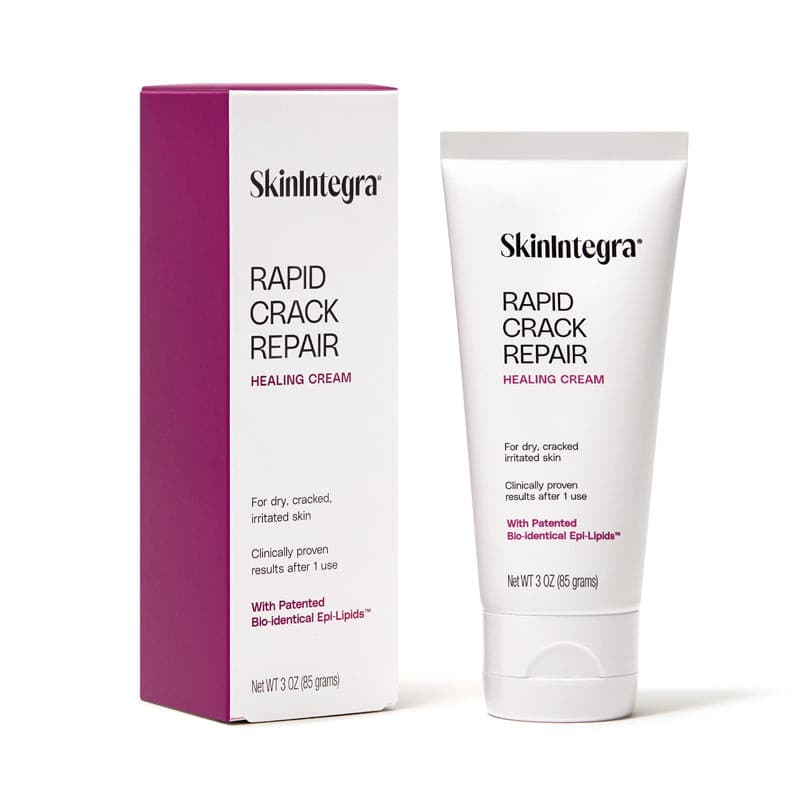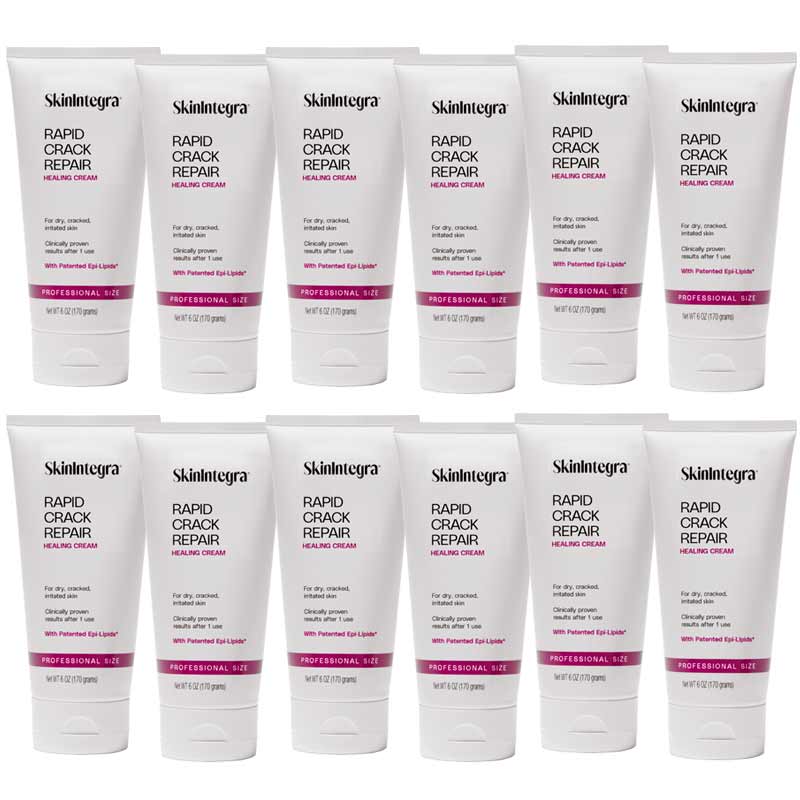If your feet are red, scaly, and cracked to the point that walking hurts, you’re not alone—and you don’t have to live with the pain. Psoriasis on the feet can feel impossible to manage, especially when deep fissures make every step uncomfortable. But with the right care, healing can start faster than you think. In this guide, you’ll discover proven, podiatrist-recommended ways to repair fissures, calm inflammation, and prevent flare-ups—so you can get back to walking comfortably again.
What Is Psoriasis and Why Does It Affect the Feet?
Psoriasis is a chronic autoimmune condition that speeds up skin cell turnover, causing thick, red, scaly patches. While it’s often seen on elbows or knees, the soles of the feet can also be affected—this is called palmoplantar psoriasis.
When it affects your feet, psoriasis may be:
-
Painful and itchy
-
Misdiagnosed as athlete’s foot or eczema
-
Slow to heal due to pressure, friction, or deep cracks
Because your feet bear weight daily, psoriasis here is harder to treat—and if you have diabetes, eczema, or sensitive skin, effective, gentle care becomes even more important.
Psoriasis and Diabetes: Why Foot Care Is Even More Critical
People with diabetes have a higher prevalence of psoriasis and are more prone to skin barrier issues such as dryness, fissures, and delayed healing. Reduced circulation and peripheral neuropathy can make cracks from psoriasis more likely to get infected and harder to heal.
That’s why choosing diabetic-safe treatments is essential. Products like SkinIntegra Rapid Crack Repair Cream—which combine 25% urea, lactic acid, and patented barrier-repair ingredients—can help soften thickened skin, restore hydration, and strengthen the skin’s natural defense.
Signs and Symptoms of Psoriasis on Feet
Many people ask, Is dry cracked feet a symptom of psoriasis? The answer is yes—especially when combined with the following signs:
-
Thick, red, scaly patches on the soles, sides, or tops of feet
-
Cracked heels or fissures that may bleed (why cracked heels bleed)
-
Burning, stinging, or intense itching
-
Nail changes such as pitting, discoloration, or thickening
-
Discomfort when walking or wearing shoes
Unlike athlete’s foot, psoriasis fissures are often symmetrical and persistent—even when antifungal creams are used.
What Triggers Psoriasis Flare-Ups on the Feet?
Identifying triggers can help you manage psoriasis cracked heels and reduce flare-ups. Common triggers include:
-
Friction or trauma from tight shoes or walking barefoot
-
Dry, cold weather (tips for winter foot care)
-
Stress
-
Skin infections (fungal or bacterial)
-
Smoking or alcohol use
How to Heal Psoriasis Foot Fissures Safely
Whether your symptoms are mild or severe, foot psoriasis requires consistent, careful management.
Step 1: Use a Diabetic-Safe, Urea-Based Moisturizer
Urea in the 10–25% range gently exfoliates while deeply hydrating, without the irritation risk of harsher formulas.
SkinIntegra Rapid Crack Repair Cream contains 25% urea and lactic acid for effective callus reduction, combined with a patented barrier-repair composition that mimics natural skin lipids to replenish deficiencies identified in diabetic skin research.
Step 2: Practice Smart Foot Hygiene
-
Wash feet daily with lukewarm water and mild soap
-
Dry thoroughly—especially between toes
-
Avoid long foot soaks if you have diabetes or open cracks (why foot soaking can be risky)
-
Rotate shoes to reduce moisture buildup
Step 3: Calm Inflammation and Itch
-
Use cold compresses for temporary relief
-
Apply OTC hydrocortisone sparingly for flare-ups
-
Avoid harsh scrubbing or pumice stones
Step 4: Consider Over-the-Counter Treatments
-
Coal tar creams to slow skin cell growth (American Academy of Dermatology psoriasis resources)
-
Salicylic acid (with caution—avoid if you have diabetes unless approved by a podiatrist)
-
Short-term topical corticosteroids for acute flare-ups
The Best Moisturizer for Psoriasis on Feet: Why SkinIntegra Works
SkinIntegra Rapid Crack Repair Cream is more than just a moisturizer—it’s the result of investigative research conducted by SkinIntegra in collaboration with leading podiatrists and dermatologists.

Research Focus:
It centered on the diabetic skin barrier—specifically, how diabetes alters skin structure and impairs healing mechanisms. Diabetes can reduce the skin’s production of essential lipids, compromise its ability to retain moisture, and slow the repair of damaged tissue. This weakened barrier leaves the skin more prone to dryness, cracking, and infection.
Why This Matters for Psoriasis:
Psoriasis already accelerates skin turnover and disrupts the barrier, leading to dryness, scaling, and painful fissures. When a patient has both psoriasis and diabetes—or skin that shares similar barrier deficiencies—the cracks on the feet become harder to heal and more likely to reopen. By addressing the same core deficiencies found in diabetic skin, we can also improve outcomes for stubborn psoriasis fissures.
The Breakthrough:
To target these deficiencies, SkinIntegra developed a now-patented skin barrier-mimicking composition that replenishes missing lipids, moisturizers, and nutrients in ratios found in healthy skin. Restoring these components helps create the optimal environment for faster, more complete healing—even for long-standing, treatment-resistant cracks.
The Results:
-
Patented barrier-repair complex with ceramides, cholesterol, essential fatty acids, hyaluronic acid, and other natural moisturizing factors
-
25% urea + lactic acid to exfoliate, soften, and hydrate thick, callused skin without the irritation risk of higher urea concentrations
-
Clinically shown to improve visible dryness, cracks, and callus buildup in as little as 24 hours
-
Safe for use on diabetic, eczema-prone, and sensitive skin
-
American Podiatric Medical Association (APMA) Seal of Approval and widely recommended by podiatrists for both at-home and post-debridement care
With its combination of scientifically targeted barrier repair, patented formulation, and expert endorsement, SkinIntegra is uniquely positioned to help heal the deep, persistent fissures caused by psoriasis—especially when complicated by diabetes or similar barrier deficiencies.
Real-World Results: From Chronic Plaque Psoriasis to Visible Change in 6 Weeks
A 72-year-old female with a 50+ year history of treatment-resistant plaque psoriasis on both feet applied SkinIntegra twice daily. Follow-up photos at 6 weeks show notable improvement.
Case and images courtesy of Dr. Karen A. Langone, DPM, DABPM, FACPM, FAAPSM, immediate past president of @aawpodiatrists. Used with permission.
“Amazing! The patient is ecstatic!” — Dr. Karen Langone, board-certified podiatrist
Educational case. Individual results may vary.

When to See a Doctor
Seek medical advice if:
-
Cracks bleed or show signs of infection (signs of skin infection)
-
OTC remedies fail after 2–3 weeks
-
You have diabetes or an immune-compromising condition
-
You’re unsure if it’s psoriasis or fungal infection
Lifestyle Tips for Managing Psoriasis on Feet
-
Wear breathable footwear (leather or mesh)
-
Stay hydrated (how hydration helps skin health)
-
Trim nails carefully to avoid trauma (safe toenail trimming tips)
-
Manage stress with yoga, meditation, or deep breathing
-
Maintain a healthy weight to reduce heel pressure
FAQ: Psoriasis on Feet
Q: Is dry cracked feet a symptom of psoriasis?
A: Yes, especially when combined with thick, scaly patches and symmetry on both feet.
Q: What’s the best cream for psoriasis foot fissures?
A: A 10–25% urea cream with barrier-repair ingredients—like SkinIntegra Rapid Crack Repair Cream.
Q: Can I exfoliate cracked skin from foot psoriasis?
A: Avoid physical exfoliants—choose a chemical exfoliant like urea for safe softening.
Q: Does having diabetes make psoriasis on the feet worse?
A: Yes. Diabetes can weaken the skin barrier, reduce circulation, and slow healing, making cracks from psoriasis more likely to become deeper, infected, and harder to treat. Using a diabetic-safe, barrier-repair cream can help improve healing outcomes.
Q: How long does it take to heal cracked heels from psoriasis?
A: Healing time depends on the severity of the cracks, your overall skin health, and how consistently you treat them. With daily use of a urea-based barrier-repair cream like SkinIntegra, improvement can often be seen within 1–2 weeks, with deeper fissures taking longer.
Conclusion: Take the First Step Toward Relief
Psoriasis on your feet doesn’t just hurt—it disrupts your daily life. With gentle, clinically backed products like SkinIntegra, plus smart trigger management, you can heal cracks, reduce flare-ups, and walk comfortably again.





